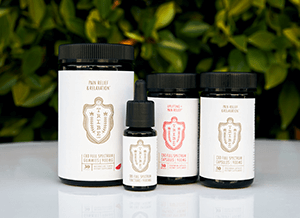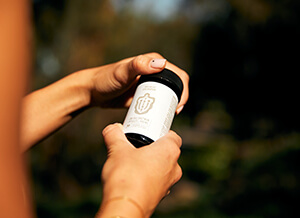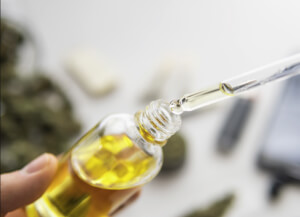

Cannabidiol (CBD) Oil Guide: Benefits, Effects, and Uses
CBD oil is increasing in popularity as many are using it as an organic treatment for a variety of health reasons.
There are various methods of consuming CBD oil, which is driving action to the expanding industry. Many pre-existing categories, including beauty products, beverages, and dietary supplements or capsules, now contain CBD oil. There are a variety of cannabis products, from edibles to tinctures and drops, that include CBD as well.
It is 2019, and society is beginning to face the truth of what is genuinely important in life: overall health and well-being. With that, CBD oil is starting to become part of the backbone of mainstream health rituals.
Brief History of CBD Oil
Although CBD is currently one of the newest and hottest topics talked about today, it has been around dating back nearly 10,000 years ago. The use of the cannabis plant appeared in ancient civilizations, including ancient China and India.
Ancient Times
First, in 6,000 B.C., cannabis seeds and oil were used for food in China. About 2,000 years later, reports indicate China and Turkestan were using textiles made of hemp. The use of cannabis also appears in ancient India between 2,000-800 B.C. The plant was being used ritually as an offering to Shiva and is considered one of the five sacred plants of India. The Atharvaveda, or the Hindu holy text, mentions dried cannabis as ‘sacred grass’ and explains how balms and tinctures derive from cannabis.
Next, the first recorded medicinal use of cannabis surfaced in 2737 B.C. Chinese emperor Shen-Nung was reported using cannabis-based tea and ointments for a variety of health ailments. From that point on, the uses of cannabis spread, expanding all across Asia and Europe by the 16th century. Discovering the different utilizations of hemp (i.e., food, fiber, and cloth) in the B.C. age implies that cannabis might be the first human agricultural crop in history.
Then, by the 1600s, cannabis cultivation came to North America and stretched throughout the colonies. Individual colonies, like the those in Virginia, Massachusetts, and Connecticut, appeared to enforce laws giving farmers the approval to harvest hemp. Fast forward a couple hundred years later, and physicians began to take notes on the various benefits and use for hemp, publishing medical documentation with these records. At the time, hemp appeared to be used not only medicinally, but also as a form of commodity to pay for goods and services. Virginia, Pennsylvania, and Maryland all revealed using hemp seeds as such a resource.
Modern Times
Beginning in the late 1930s, the War on Drugs began to cast a negative shadow on cannabis. During this time, new medicines such as opioids were being developed for similar purposes (to alleviate pain). The War on Drugs movement led by the federal government was implemented, making cannabis cultivation illegal. The Marijuana Tax Law was the first of the movement to ban marijuana use in the United States. By 1970, the cannabis plant was classified as a Schedule 1 drug, along with other Schedule 1 drugs like heroin, LSD, and ecstasy.
Schedule 1 (I) drugs, substances, or chemicals are defined by the federal government as drugs with no currently accepted medical use and a high potential for abuse. Yet by 1996, the state of California legalizes medical marijuana usage, regardless of the federal ban.
Finally with the passing of the 2018 Farm Bill, CBD is federally legal as long as it contains less than 0.3% of THC in the formula. New scientific studies continue to prove how cannabis, specifically CBD, is beneficial to an individual’s health. Each year, a substantial amount of money is poured into R&D to help improve the quality of CBD and advance its formulas.
Consequently, companies have access to modern technologies which can help develop the chemical formula of CBD products and produce higher-quality results. Now, people are able to purchase CBD nationwide at their local grocery store, gas station, beauty salon, or even online.
What is Cannabidiol (CBD) Oil?
Cannabidiol is one of the main cannabinoids extracted from the cannabis plant. In fact, there are over 104 recognized chemical compounds, or cannabinoids, produced by the cannabis plant. Other compounds identified include terpenoids, flavonoids, nitrogenous compounds, and more common plant molecules. However, CBD stands out among the group due to its unique, non-psychoactive characteristic.
Hemp vs. Marijuana Plant
It may come as a surprise that the hemp plant is in fact different than the marijuana plant. It is because the differences are ever so slight. As the popularity and accessibility of hemp products continue to ramp up, it’s quite easy to confuse the two. There are a few distinctions between hemp and marijuana plants. However, let’s first start by understanding that they both are from the same species: Cannabis. It might be easy to simply think of them as cousins. Moreover, ‘cannabis’ is the correct scientific term to refer to both hemp and marijuana.
Hemp has minimal to absolutely zero psychoactive effects after consumption. Also, there must be less than 0.3% THC level to be considered hemp. In this plant, it’s common to find higher concentrations of CBD and other cannabinoids. The word ‘hemp’ has been around for thousands of years. However, the government currently indicates ‘hemp’ as mostly industrially produced cannabis with the characteristics mentioned above.
Now, let’s focus on the marijuana plant. Similarly to the hemp plant, the term ‘marijuana’ is not the plant’s scientific term. Instead, ‘marijuana’ was coined during the mid-1900s to shame offenders during prohibition. Nevertheless, cannabis is an accurate, scientific term for it. Marijuana differs from the hemp plant due to its psychoactive effects after consumption. Also, there are much higher levels of THC extracted from the marijuana plant compared to hemp. The marijuana plant can also produce CBD and other minor cannabinoids like CBN, CBC, and CBG.
Commonly Reported CBD Effects
According to Harvard Medical School, CBD has been studied for a wide variety of health issues. Many have reported positive effects after taking cannabidiol, but this is only feedback from consumers and you should keep in mind that research has not yet confirmed these claims.
Does CBD Oil Get You High?
Typically, people who are new to the cannabis space have one question on their mind.
“Will CBD get me high?” The answer is, no.
CBD is the main component that appears in the hemp plant. It contains little to no levels of THC (less than 0.3%). On the other hand, THC is the primary cannabinoid in the marijuana plant. THC, or tetrahydrocannabinol, is known for its mental and physical effects after consumption. In short, the ‘high’ that individuals refer to only appears after ingesting substantial levels of THC. CBD oil, one of the main non-psychoactive cannabinoids extracted from the cannabis plant, will not get you high.
Are there Side Effects of CBD Oil?
CBD may produce adverse reactions in some individuals. A few of the most commonly reported side effects include tiredness, diarrhea, and changes to appetite/weight. Likewise, individuals may experience signs of adverse reactions from CBD oil if taken with another medication or supplement.
Does CBD Oil Make You Sleepy?
Unlike THC, CBD does not act as a sedative to the body.
Our body’s Endocannabinoid System (ECS) has a unique relationship with both CBD and THC. The ECS is responsible for regulating several functions in our bodies, including, but not limited to, our stress response. When CBD interacts with our ECS, it’s affecting how our body balances stress responses. Meanwhile, the interaction between THC and our ECS is accountable for the sedative effects on the body. In all, CBD oil does not act as a sedative.
What Does CBD Oil Do?
As time and cannabis legality persists, more people are beginning to adopt CBD oil into their overall health and wellness routines. Moreover, it is important to be knowledgeable of the different methods in which CBD is used.
Using CBD Oil
There are a multitude of ways to use CBD. One of the most common is to use CBD oil droppers. People typically use droppers for simple sublingual use.
Additionally, individuals can inhale CBD. E-cigarette vaporizer devices, or “vape pens,” are popular forms of inhaling CBD.
CBD is also eaten or consumed as a drink. Today, there are many beverages available on the market with CBD as a primary ingredient. People can also consume edibles to feel the effects of CBD. However, it is one of the most inefficient methods.
Lastly, topical rubs and balms are popular products containing CBD. People typically apply on sore muscles and joints.
Bioavailability of CBD
By definition, bioavailability is the rate at which a substance (such as a drug) is absorbed into the bloodstream. In regards to CBD, bioavailability just means how concentrated the formula is, and how quickly it can take into effect. The bioavailability of CBD, however, ranges from product to product. Depending on the method individuals’ use to consume CBD, the bioavailability may be stronger or weaker.
For example, consumers have reported the effectiveness of vaporized consumption is typically much higher than when consuming CBD orally. Understanding bioavailability allows you to determine the best method to consume CBD for your specific needs.
How Long Does it Take CBD Oil to Take Effect?
The amount of time in which it takes CBD oil to take effect, again, varies by each consumption method. Individuals will begin to feel the effects of CBD after twenty minutes or so when taken sublingually. Even so, it is typical for CBD edibles or capsules to take up to two hours until the effects kick in. Moreover, the bioavailability of CBD determines how quickly you will start to feel the effects.
Ways to Consume CBD Oil
Sublingual, oral, topical, and inhalation are some of the most common ways to consume CBD.
Sublingual
One of the most popular ways to consume CBD is sublingual. Sublingually means situated or applied under the tongue. Sublingual consumption of CBD remains to be one of the most popular options due to its immediate effectiveness. For instance, the cannabinoids skip the process of digestion altogether when absorbed under the tongue. As a result, your bloodstream absorbs the cannabinoids almost immediately, giving you the instant effects.
A few of the most popular ways to consume CBD sublingually is with liquid hemp oil, CBD tinctures or drops, and sprays or spritzers designed for oral application under the tongue.
Ingestion
Another common way people are consuming CBD is by ingesting it. Unlike sublingual consumption, CBD moves through your digestive system. After your liver breaks down the elements, the cannabinoids then flow into your bloodstream, producing its calming effect.
Studies indicate individuals begin to feel the results of ingesting CBD after about 45 minutes to an hour. Although ingesting CBD takes longer to take into effect, the duration of experiencing CBD effects will last longer. Results of ingesting CBD can last between 2-4 hours longer than a topical or smoking. Common ways individuals are ingesting CBD are through capsules, beverages, powders, and edibles.
Topically
Applying CBD topically is a popular method consumers use when wanting to target key areas of muscle and joint inflammation. Unlike any of the other consumption methods, CBD absorbs through your skin in topical form. Individuals can apply CBD topically with balms and salves, or transdermal patches.
Further, balms and salves are great for massage and topical application. To feel the most effect, apply a generous about of topical ointment on the affected area or specific muscle. Then, massage in circles.
Inhaling
Lastly, people who are looking for short-term effects usually prefer to consume CBD by inhaling it. Similarly enough to sublingual use, smoking CBD provides the user with immediate effects. When smoking CBD, cannabinoids flow through your lungs instead of passing through your digestive system; ultimately providing a faster absorption and quicker outcomes.
Individuals can inhale CBD by smoking the actual flower, wax, or the concentrate in a vape pen.
Types of CBD Oil
There are many different ways to consume CBD oil. Whether it’s from taking an edible or putting a few drops of CBD oil under your tongue, you will virtually feel the same general effects.
However, did you know there are three primary forms of CBD on the market today? CBD products can come in the form of either full spectrum, broad-spectrum, or CBD Isolate. Each form of CBD has its advantages and disadvantages depending on the situation.
CBD Isolate or Pure CBD
Scientifically speaking, an isolate is a compound in its purest form. Therefore, CBD isolate is the purest form of Cannabidiol without the presence of other compounds, cannabinoids, terpenes, or flavonoids.
CBD Isolate is made by removing all other cannabinoids during the extraction process. Additionally, CBD Isolate is extracted from marijuana plants and contains zero levels of THC. Individuals looking to take high doses of CBD (with absolutely zero THC or psychoactive effects) should consider CBD Isolate. Some of the most significant benefits of CBD Isolate include high purity, consistency, negligible levels of THC and mild flavors and smell.
Full Spectrum CBD
On the other hand, full-spectrum CBD is an extract that includes all of the cannabinoids found in the extraction process, including terpenes and other compounds. For example, full-spectrum CBD comprises of other cannabinoids from the marijuana plant, including CBN, CBG, THCV, terpenes, and even small traces of THC. That said, the levels of THC in legal formulas remain below 0.3%
People once believed that CBD Isolate was the most effective form of CBD compared to full spectrum. However, recent studies and consumer feedback show that full-spectrum CBD has further therapeutic benefits than CBD Isolate, including higher and faster levels of relief for users due to the ‘entourage effect.’
The entourage effect is essentially when all cannabinoids like CBN, CBG, and THCV interact cooperatively, producing additional benefits from the marijuana plant.
Broad Spectrum CBD
Broad-spectrum CBD gives people the best of both worlds by providing a spectrum of compounds with no THC. Broad-spectrum CBD contains a variety of compounds like CBN, CBG and CBC that are found within full-spectrum CBD. However, similar to CBD Isolate it contains zero THC.
Because broad-spectrum extracts contain various cannabinoids, it also produces the entourage effect. Broad-spectrum is an excellent option for those wanting to take advantage of the entourage effect, and avoid any unwanted THC compounds.
CBD vs Hemp Oil
The main difference between CBD and hemp oil is how they originate from different parts of the cannabis plant. Additionally, CBD and hemp oil have different uses and intended effects. CBD oil is often derived from the whole plant with the main ingredient being CBD, of course.
On the other hand, hemp oil is extracted strictly from the plants’ seeds through a process called ‘pressing.’ Hemp seeds contain large amounts of wholesome nutrients. Consequently, hemp oil continues to increase in popularity in areas like cooking and supplements.
Is CBD Legal?
On December 12, 2018, congress passed the 2018 U.S. Farm Bill. The Farm Bill removes hemp from the Schedule 1 list and creates a pathway for legal CBD products. Moreover, hemp-derived CBD is now legal in all 50 states. To stay within the law, there can be no more than 0.3% THC present in CBD products.
CBD FAQ
Are there any CBD drug interactions?
CBD still needs additional scientific studies to pledge there are no related drug interactions. At this time, we are unable to conclude that CBD does not interact with other drugs. CBD researcher Yasmin Hurd suspects CBD could interact with most medications.
If CBD is taken simultaneously with other drugs like Benzodiazepines, it could heighten your side effects. Additionally, it can cause you to feel more sedated than average. In some rare cases, the drug combo may become toxic or even interfere with your respiratory system.
Individuals must consult with their doctor before consuming CBD while taking other medications.
Can you fly with CBD oil?
Notably, flying with any form of marijuana is illegal, even while recreational and medical marijuana can be legal in individual states. However, TSA recently updated its informational page on medical marijuana expressing how passengers can now legally fly with hemp-derived CBD.
The FDA’s approval of Epidiolex, a drug containing CBD, gave the TSA confirmation to legalize flying with hemp-derived CBD. Epidiolex applies to treat seizures in children with epilepsy.
In all, as long as your CBD is hemp-derived and contains less than 0.3% THC, you are safe to fly!
Warning Statement: The content in this article is for informational purposes only. The information in this article does not have anything to do with Tribe CBD or our products. We choose to keep this information for others to view because we are passionate about hemp and the history of hemp derived cannabidiol.




